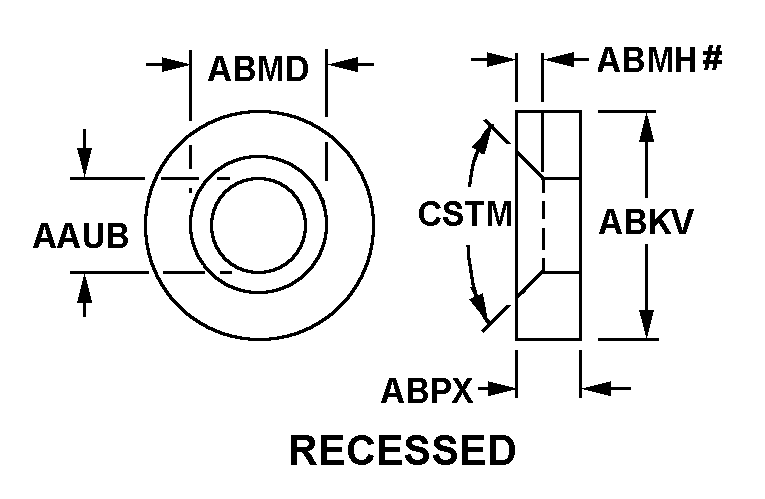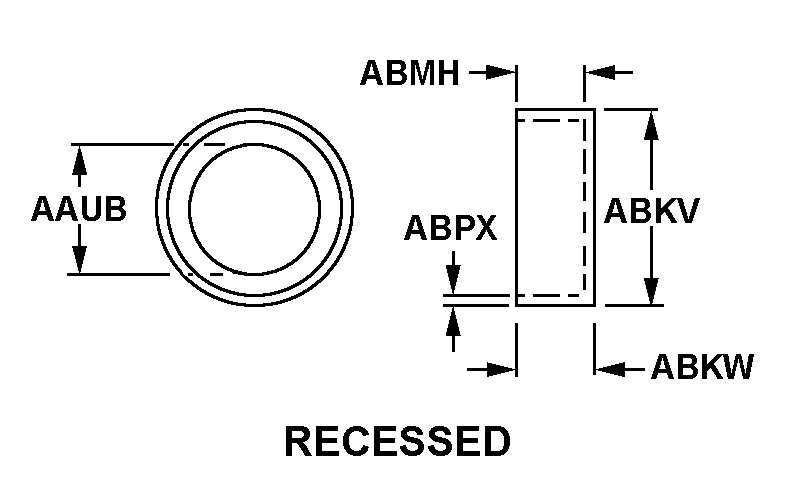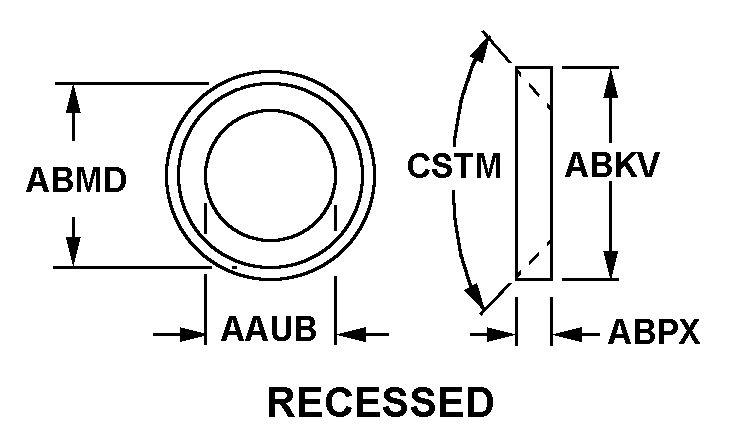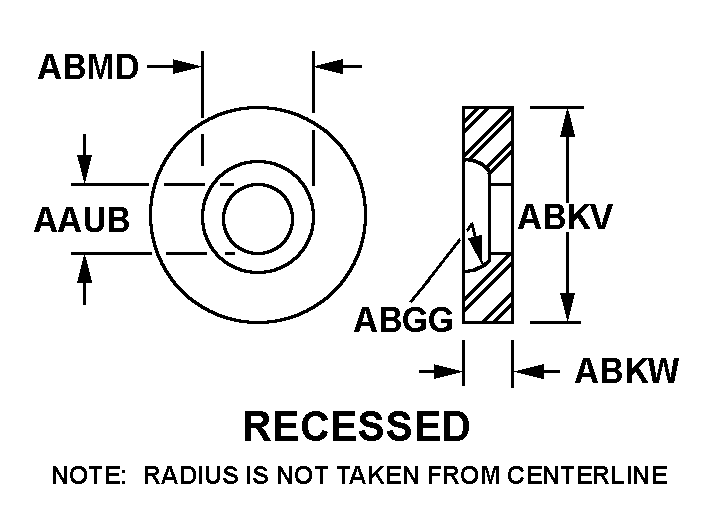5310011256765
Price Quote Get an up to date pricing and availability quote for this product. Order online or over the phone.
Quality Commitment
Serving our customers with quality and safety first.
- AS9120 Certified
- Audited supply chain
- ITAR Registered
- DDTC Registered
- HAZMAT Certified
- Customer service objectives
- Every product 100% inspected

5310-01-125-6765 Specification Set by the OEM (see RNCC code 3)
0.030in. and 0.035in. ⁓3/64"
0.207in. and 0.209in.
0.098 in. min thk or 0.102 in max thk; 0.3000 basic taper on dia. per inch of length; washer delay used for black powder test
aluminum alloy 2011 or aluminum alloy 2017
recessed
Cross Reference Parts Part numbers that meet the specification outlined on this page and set by the OEM
Identification Item Identification Guide (IIG) and Item Name Code (INC)






Definition Definition of approved item name (AIN): "WASHER,RECESSED"
A washer of any peripheral shape having a centrally located hole. Both bearing surfaces are parallel and flat, but one or both of the bearing surfaces must be broken by a counterbore, countersink, or similarly shaped recess. The thickness must not exceed 25 per cent of the outside diameter or the largest outside dimension. The maximum limit of the tolerance or range applied to the thickness and/or largest outside dimension must be used to determine compliance. Excludes washer, concave, retainer, packing, and thrust type washers. See also spacer, sleeve; and spacer, stepped.
Packaging & Dimensions Packaging instructions, special markings, and approx. weight/dims
Packing shall be accomplished to meet the performance test requirements of astm-d4169, distribution cycle 18, assurance level 1.
Packing shall be accomplished using fiberboard boxes, weather resistant class, fabricated in accordance with astm-d5118, or triplewall fiberboard boxes conforming to astm-d5168, class weather resistant.
Packing shall be accomplished using fiberboard boxes fabricated in accordance with astm-d5118, class domestic or astm-d5168, class non-weather resistant.
All packaging data is mandatory for compliance and no substitutions are permitted. fast packs should be included in this category.
No special marking.
Packaging Codes
OPI: Optional Procedure Indicator Code. A one position alpha code that indicates the allowable deviations from the prescribed requirements.
SPI No.: Special packaging instructions number.
LVL A/B/C: Indicates the type of shipping container required for level A, B, or C maximum packing protection.
SPC Mkg: A two position code that identifies the special markings applied to the container, which is part of the total pack to protect the contained item during preservation, packing, storage, transit and removal from the pack.
5310-01-125-6765 Material Hazmat, Precious Metals, Criticality, Enviroment, and ESD
Indicates there is no data in the hmirs and the nsn is in a fsc not generally suspected of containing hazardous materials.
Item does not contain precious metal.
Represents items with no adp components
The item does not have a critical feature such as tolerance, fit restrictions or application. nuclear hardness properties have not been determined (not valid for input).
Identification Codes
HMIC: Hazardous Material Indicator Code. A one position code that identifies a hazardous item.
PMIC: Precious Metal Indicator Code. A one position code which identifies items that have precious metals as part of their content. precious metals are those metals generally considered to be uncommon, highly valuable, and relatively superior in certain properties such as resistance to corrosion and electrical conductivity.
ESD: Electrostatic Discharge. Indicates if an item is susceptible to electrostatic discharge or electromagnetic interference damage. electrostatic discharge damage occurs when an accumulation of static electricity generated by the relative motion or separation of materials is released to another item by direct contact. electromagnetic interference damage occurs when an item comes into proximity with an electrostatic or magnetic field.
ENAC: Enviromental Attribute Code. Identifies items with environmentally preferred characteristics.
CRITL: Criticality Indicator Code. Indicates an item is technically critical by tolerance, fit, application, nuclear hardness properties, or other characteristics.






